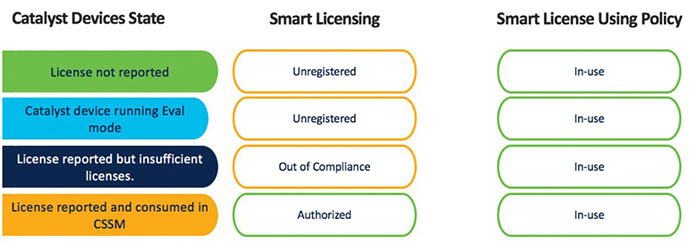
Cisco Smart License Using Policy
Prior to IOS XE 17.3.2, The IOS XE product used to boot in evaluation-mode, per product software and registration, and on-going communication every 30 days with the Cisco cloud was required.
While now, with Smart Licensing using Policy, the Device has all Licenses IN USE right out of the box. Plus, the earlier concepts, Evaluation mode, Registration, and Reservation is eliminated.
As a new deployment method for Smart Licensing, Cisco has introduced Smart License Using Policy following the IOS XE Amsterdam 17.3.2 and later. This new version supports following Cisco products: Cisco Catalyst 9000 series switches, routing platforms such as the ASR1K, ISR1K, ISR4K, Cisco Catalyst 9800 Series Wireless Controllers, IOT routers and switches, ACI, NX-OS, MDS and a few Collab products (CME, SRST, CUBE).
With this method, no evaluation mode is available at product boot and registration to cisco.com is not required anymore. Instead, customers should report them in use licenses either by using an automated reporting tool, API reporting, or direct connection from a product using a trusted connection to CSSM, or they can manually upload software use records (RUM reports) directly to CSSM via the Upload Usage Data button under the Reporting and Usage Data Files tabs. Moreover, there is a CSLU – Cisco Smart Licensing Utility that comes with Smart Licensing using Policy as a Smart Licenses Manager.
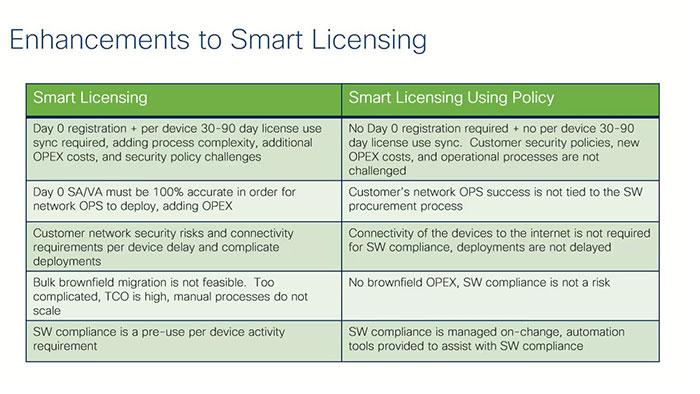
Cisco Smart License Using Policy
In this new way of smart licensing, the ordering processes of hardware and software is not changed and on-going per device communication to the Cisco.com is not needed.
Cisco Smart Licensing Utility (CSLU) is a lightweight windows application that is used to pull software use data from Cisco device and report the software use to CSSM. CSLU can be used to:
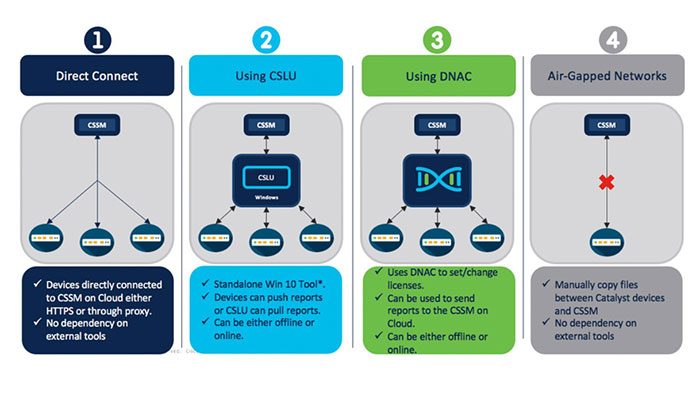
Cisco Smart License Using Policy
It also can be deployed as standalone micro service or be integrated as software component with controller-based products. Also, CSLU reports usage to CSSM on Cloud for compliance visibility. The CSLU report format is based on ISO 19770-4 standard RUM report format. Furthermore, there are five methods a product instance or PI may use to exchange licensing information with either the CSLU or the CSSM.
License reservation has been removed with Smart Licensing using Policy. The Catalyst Device still honors previously made reservations made on older releases prior to upgrade but reservations after 17.3.2 and 17.4.1 are not allowed.
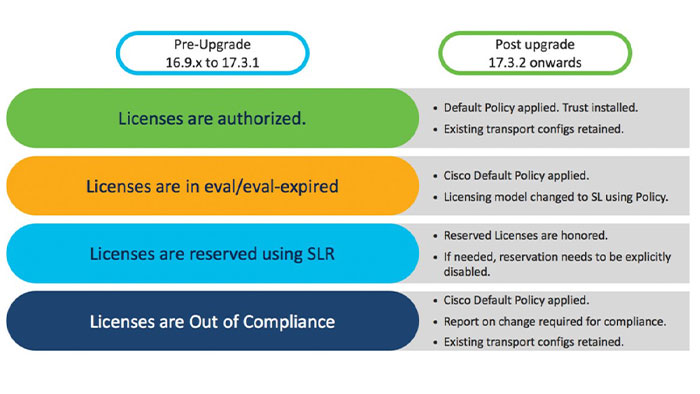
Cisco Smart License Using Policy
Currently, permanent License Reservation or PLR licenses are still supported on IOS XE 17.x and provides unlimited and full capability for customers. Customers do not need to report their licenses in case of using a PLR license.
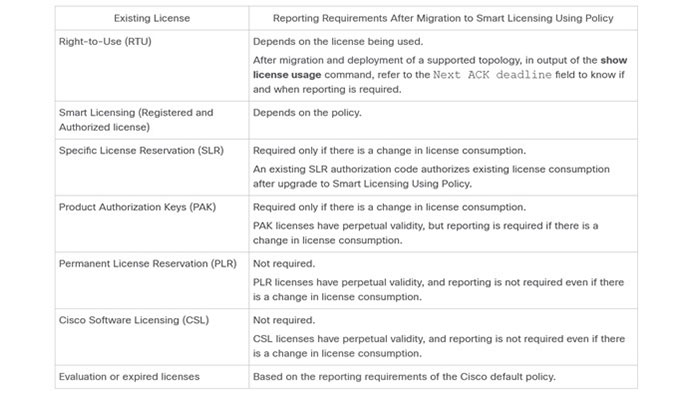
All IOS XE devices such as Catalyst switches, come with a default policy which requires reporting for subscription licenses every 90 days and a return ACK from the CSSM.
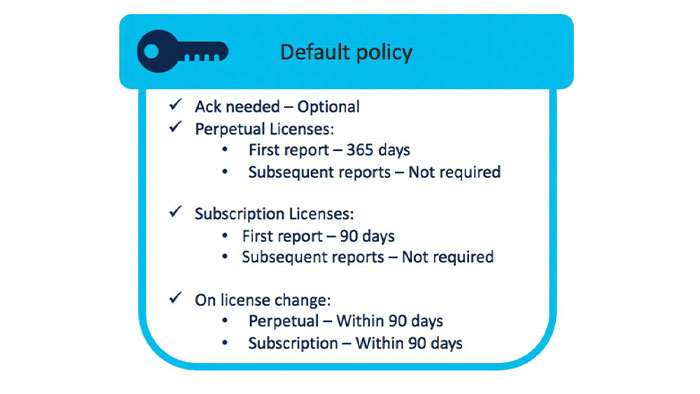
A custom defined policy can be allowed for customers who want to tweak the reporting parameters. However, at this point, there will be no enforcement from the Cisco side and If reporting is missed or not complete, is important to keep in mind that the device will NEVER stop any functionality, throttle (except Routers) or generate excessive syslog messages. It simply ALWAYS works.
Note: For IOS XE routers such as ISR4K, Export-Controlled Licenses that are export-restricted by U.S. trade-control laws, require authorization before use. The required authorization code must be installed in the corresponding product instance for these licenses. For instance, the High Security (HSECK9) license, which can be enabled on ASR and ISR routers, may be disabled until license report is acknowledged.